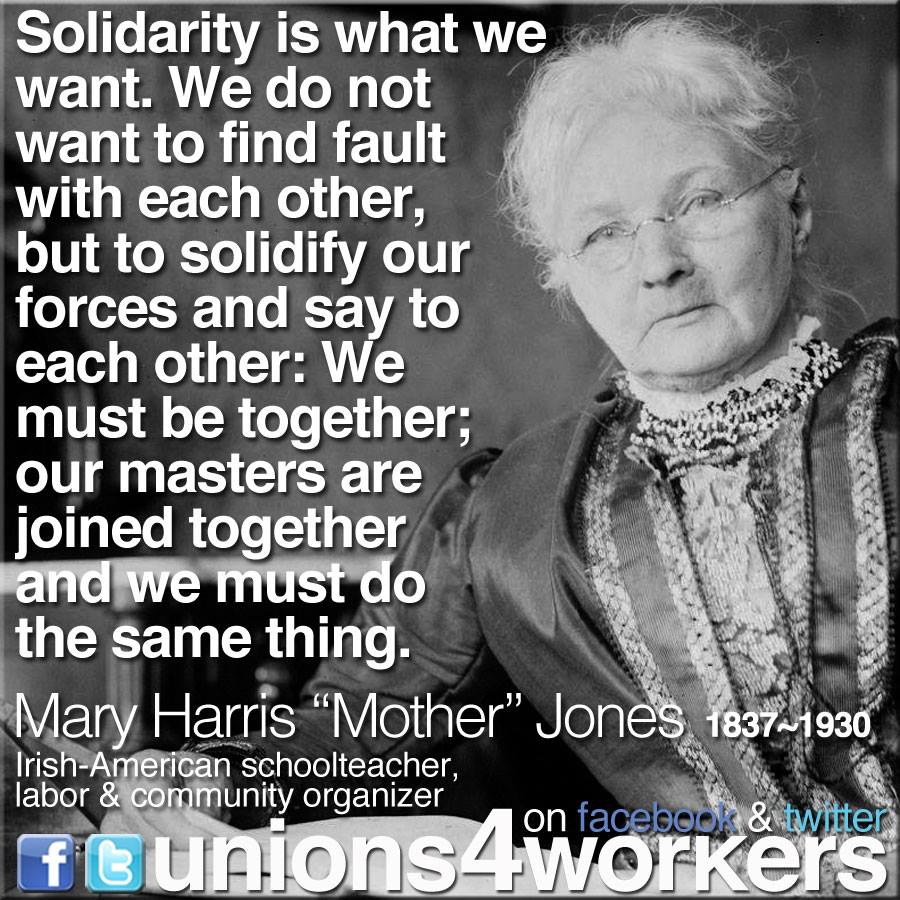Women’s History Month provides us with an opportunity to honor two extraordinary women who were born in the 19th century and made significant contributions to the labor movement—labor activist Mother Jones and Frances Perkins, the first woman to hold a cabinet position as Secretary of Labor.
Mary Harris “Mother” Jones (1837-1930) was a prominent labor activist and cofounder of the Industrial Workers of the World. As a young woman, she worked briefly as a teacher and dressmaker before marrying George Jones, an iron worker and union organizer in Tennessee. The couple had four children, but her husband and children died from the yellow fever epidemic of 1867. After the loss of her family, she moved back to Chicago to work as dressmaker, but tragedy struck again and she lost her shop in the Chicago fire in 1871.
Over the next few years, she became active in the labor movement and traveled to numerous strike sites, including rail strike of 1877 in Pittsburgh and the coal fields of Pennsylvania in 1899. It was during that period that she became known as “Mother Jones.” She was also passionate about children’s rights and led a “children’s crusade” in 1903 to protest the working conditions for children in textile mills. She helped to establish the Industrial Workers of the World in 1905; visited rebel Mexico in 1911; was arrested at the Homestead steel strike in 1919; and worked with dressmakers in Chicago in 1924.
In 1902, a district attorney in West Virginia called Mother Jones “the most dangerous woman in America” for her success in organizing mine workers. Although she has been dead for over 80 years, her name is synonymous with the labor movement. The magazine, Mother Jones, is named for her.
Frances Perkins (1880-1965) graduated from Mount Holyoke in 1902 and earned a Master’s Degree in sociology from Columbia University in 1910. After graduate school, she worked as a social worker and became involved in labor reform efforts after witnessing workers trying to escape from the cramped floors of the Triangle Shirtwaist Factory in 1911.
She served as the first woman Industrial Commissioner under New York Governor Franklin Roosevelt, and held other important labor-related jobs in New York state government under Governors Roosevelt and Al Smith. In 1933, President Roosevelt appointed her as his Secretary of Labor—making her the first woman to hold a U.S. Cabinet position.
As Secretary of Labor, Frances Perkins championed many aspects of the New Deal, including unemployment insurance, child labor laws, and the adoption of the federal minimum wage. She was largely responsible for the creation of the Social Security system through her role on the President’s Committee on Economic Security. Following her service as Secretary of Labor, she was asked by President Truman to serve on the U.S. Civil Service Commission. She resigned from public service in 1952 shortly after the death of her husband, Paul Caldwell Wilson.
Following her government service career, she continued to be active as a teacher and lecturer until her death. The Frances Perkins Building that serves as the headquarters of the U.S. Department of Labor was named in her honor in 1980.

